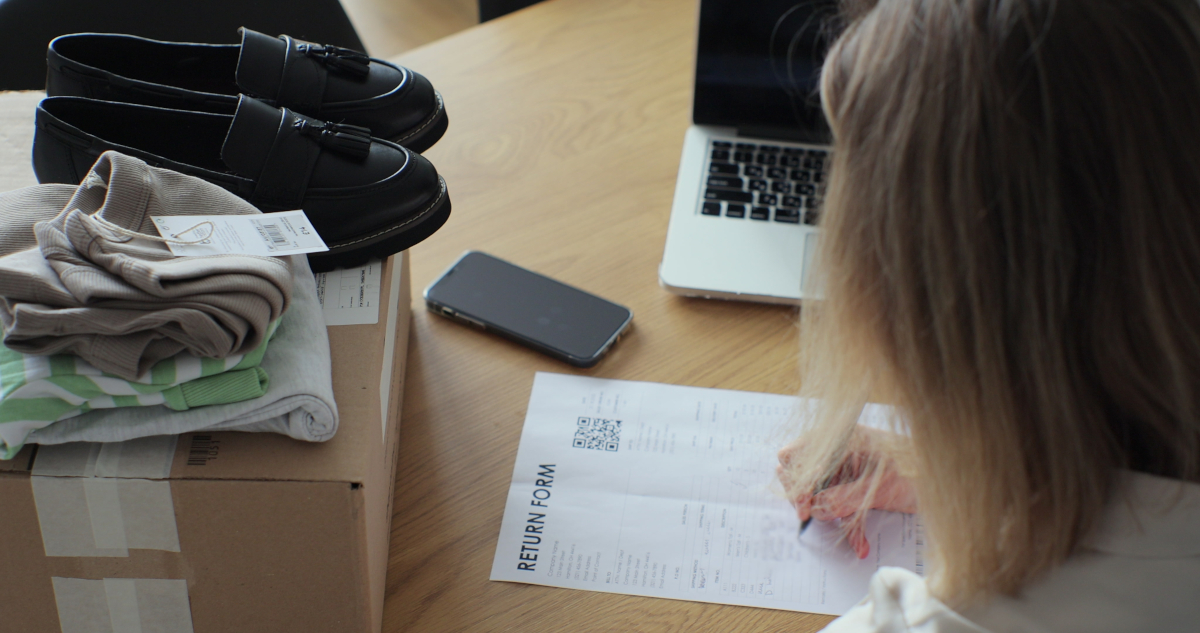Differentiate between wardrobing and bracketing with returns analytics to deter abuse, optimize product assortment, improve the customer experience, and increase net revenue.
It’s entirely acceptable when a customer finds that a product doesn’t meet their needs or expectations and then decides to return it following the guidelines dictated by a brand’s return policy. This helps create a more positive experience and allows customers to find their desired products.
However, some customers take advantage of return policies to such an extent that it becomes unprofitable. While some returns abuse instances may be considered “friendly fraud” since they’re less malicious than behaviors like product switching, they can all negatively impact a business’s net revenue.
Such is the case with behaviors like wardrobing, which involves purchasing products with the intention of returning them. Obviously, these transactions are undesirable. But can the same be said for bracketing?
While bracketing may seem similar to wardrobing since it involves purchasing and returning products, its differences are important. Not only is the intent behind bracketing less malicious, but returns data from these transactions provides valuable insights that can be used to optimize product assortment, improve the customer experience, increase net revenue, and more.
Read on and learn more about the differences between wardrobing and bracketing and how granular returns data can be used to identify opportunities from these transactions.
What is Wardrobing?
Wardrobing, also known as “wear and return” or “free renting,” is when customers purchase products with the intention of using them only for a short while. Afterward, they return the product and often misrepresent the product return reasons in order to get a full refund.
Customers may engage in wardrobing for several reasons. Sometimes they need an item for a one-time special occasion, they’re attempting to keep up with changing fashion trends, or they simply view it as a victimless crime.
Influencers, for example, experience pressure to stay on top of fashion trends and maintain a specific online image. They’ll purchase clothing, accessories, and/or even photography/video equipment in order to create social media content. Afterward, they’ll return the items for a full refund.
What complicates matters further is the difficulty of tracking wardrobing. A 2023 study in the Journal of Retailing and Consumer Services states, “Unless an item shows wear-and-tear, or the retailer happens to see the pictures on social media and knows the person wearing the item as a serial returner, it is difficult to calculate the related loss. This increases the challenges of mitigating the wardrobing.”
The Cost of Wardrobing Returns Fraud
While some customers feel this behavior is harmless, the business impact can be significant. Imagine that a customer returns an item they had no intention of keeping. Not only does the business lose that sale, but it also incurs the cost of the return process (shipping, warehouse operations, etc.). And the costs don’t stop there:
1. Some returned products cannot be resold at full price due to damage, seasonality, etc.
2. Trend-driven products may no longer be in style and will have a lower sales velocity once returned.
3. Non-wardrobing customers miss out on the chance to purchase the product. This means a business potentially misses out on two sales with one return process.
Retail Touchpoints notes, “The problem has grown so prevalent that companies like ASOS are tracking social media accounts to mitigate wardrobing fraud and ban serial returners.”
Outside of monitoring social media, other strategies for minimizing wardrobing may include revising the return window, requiring tags on returned products, strategic tag placement, additional staff training to identify wardrobing returns, etc. Without more visibility, however, creating data-driven solutions to address the subtle nuances of these transactions is difficult.
What is Bracketing?
Some might consider wardrobing and bracketing one and the same. However, their differences are incredibly important.
Bracketing is when shoppers purchase a product in a range of sizing or variations. This allows them to find the product that best suits their needs/preferences without waiting on an additional purchase. Once they find their desired product, they’ll return the rest. The behavior may seem similar to wardrobing, but these customers usually intend to keep at least one of the items they initially purchased.
For example, a luxury shoe retailer may offer a dress shoe in both high-heel and kitten-heel styles. If a customer is unsure which style will be more appropriate or comfortable, they may purchase both with the intent to return the pair they don’t want.
Why Is It Important to Distinguish Between Wardrobing and Bracketing?
While it can be easy to assume that the financial impact of bracketing may be similarly detrimental compared to wardrobing, we’ve discovered that many consumers who bracket end up keeping more than one item.
In fact, while shoppers who bracket for size will naturally return more items, the keep rate for bracketing is sometimes higher than 75%. In addition to the smaller impact on net revenue, returns data from bracketing can reveal important insights and opportunities.
Consider that bracketing can often happen during first purchase transactions when shoppers are unfamiliar with a brand’s fit and sizing, materials, or even quality. Returns data from these transactions can identify which products need additional information in the form of detailed sizing charts, reviews, and/or high-quality product images. Yes, this reduces the need for bracketing. But it also improves the overall shopping experience for new customers, recurring customers, and even extremely loyal customers.
Customer behavior insights from bracketing can also be used to improve product assortment. For example, imagine that a brand discovers its shoppers like to bracket for color, and these transactions also have a low retail return rate. In this instance, it may be beneficial to offer multiple color options to encourage bracketing.
Increase Wardrobing and Bracketing Visibility with Returns Analytics
The ability to distinguish between wardrobing and bracketing is incredibly powerful. Increased visibility into these transactions not only makes it easier for businesses to deter returns abuse, but it provides insights that can be used to protect and increase the bottom line. That’s why using an advanced return management platform is so important.
While this type of information was difficult, if not impossible, to attain in the past, the Returnalyze Intelligent Dashboard makes it possible to access the granular data necessary for this type of analysis. What’s more, a partnership with Returnalyze comes with step-by-step guidance and analysis from our data experts.
Don't let a lack of data visibility cause you to miss valuable opportunities. Schedule a demo or contact our team today.

